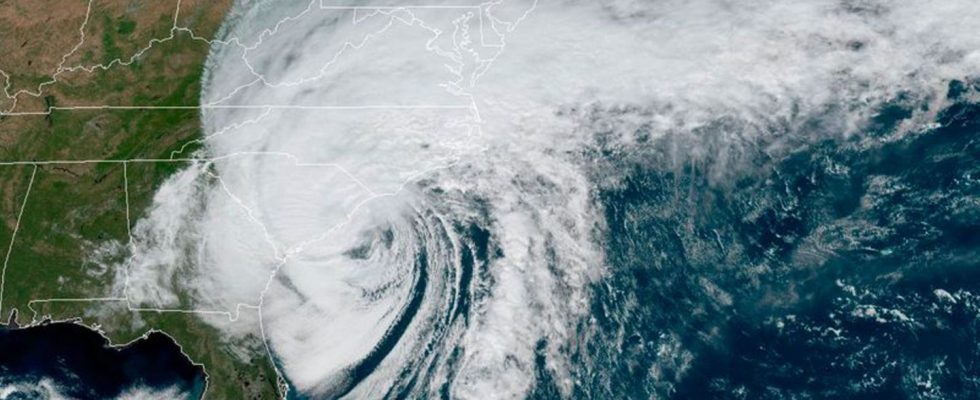Climate change
Hurricanes are gaining strength at an ever-increasing rate
Hurricane Ian over the coast of South Carolina. photo
© -/NOAA/AP/dpa
Climate change brings with it a higher probability of extreme weather events. Especially with hurricanes, another factor changes in a dangerous way.
Tropical cyclones in the Atlantic Ocean and the Caribbean Sea are gaining strength at an increasing rate, according to a study. Because in the course of As climate change increases the surface temperatures of the oceans, hurricanes can not only absorb more water vapor, but also do so more quickly, explains Andra Garner from Rowan University in Glassboro (New Jersey, USA) in the journal “Scientific Reports”. Tropical cyclones derive their energy primarily from the heat of vaporization of the water vapor they absorb over an ocean.
The development is worrying – especially since hurricanes are difficult to predict early on and can lead to potentially major damage, said Garner. Hurricanes Sandy (2012), Harvey (2017), Irma (2017), Ida (2021) and Ian (2022) caused the highest damage between 2012 and 2022. It developed from a tropical storm to a Category 3 or greater hurricane on the Saffir-Simpson hurricane wind scale, with wind speeds of at least 178 kilometers per hour, in less than three days.
More kilometers per hour
Garner had evaluated information from the hurricane database “Hurdat2,” which contains numerous values for all hurricanes. She divided the hurricane data into three time periods: 1971 to 1990, 1986 to 2005 and 2001 to 2020. The middle period overlaps with the other two. The researcher then determined the 12-hour, 24-hour and 36-hour intervals in which the hurricane increased in strength the most.
This enabled her to compare the intensification rate, i.e. the increase in wind speeds, in the different time periods. While the average maximum intensification rate within 24 hours was 32.8 kilometers per hour in the first period, from 2001 to 2020 it was already 41.7 kilometers per hour. The highest intensification rate within 12 hours was an average of 29.1 kilometers per hour – 28.7 percent higher than in the period 1971 to 1990 (22.6 kilometers per hour).
According to the analysis, hurricanes today have more than twice the probability of developing from a weak (Category 1) to a strong hurricane (Category 3 or more) within 24 hours: for the years 1971 to 1990 it was 3, 23 percent, for the period 2001 to 2020 at 8.12 percent.
“Peak intensity rates reaching or exceeding 50 knots also become more likely over time,” Garner writes. 50 knots corresponds to 92.6 kilometers per hour. The probability of a hurricane gaining this strength within 24 hours was 2.6 percent from 1971 to 1990. In the most recent period, this happened with a probability of 7.4 percent.
Other regions
During the study period, the regions in which tropical cyclones occur in the Atlantic and the Caribbean also shifted. The probability of a hurricane gaining strength so quickly in the Gulf of Mexico decreased in all intervals examined (12, 24, 36 hours) from 1971 to 2020. However, this probability increased on the US Atlantic coast and in the southern Caribbean Sea.
“Tropical cyclones, which intensify particularly quickly in the southwestern Caribbean, can have devastating effects in many relatively resource-poor countries in Central America,” Garner points out. Their research findings underline the need to curb global warming in order to limit an even faster increase in the strength of hurricanes, writes the study author. It calls for coastal planning and communication measures that enable vulnerable communities to adapt to changing threats from tropical cyclones.

